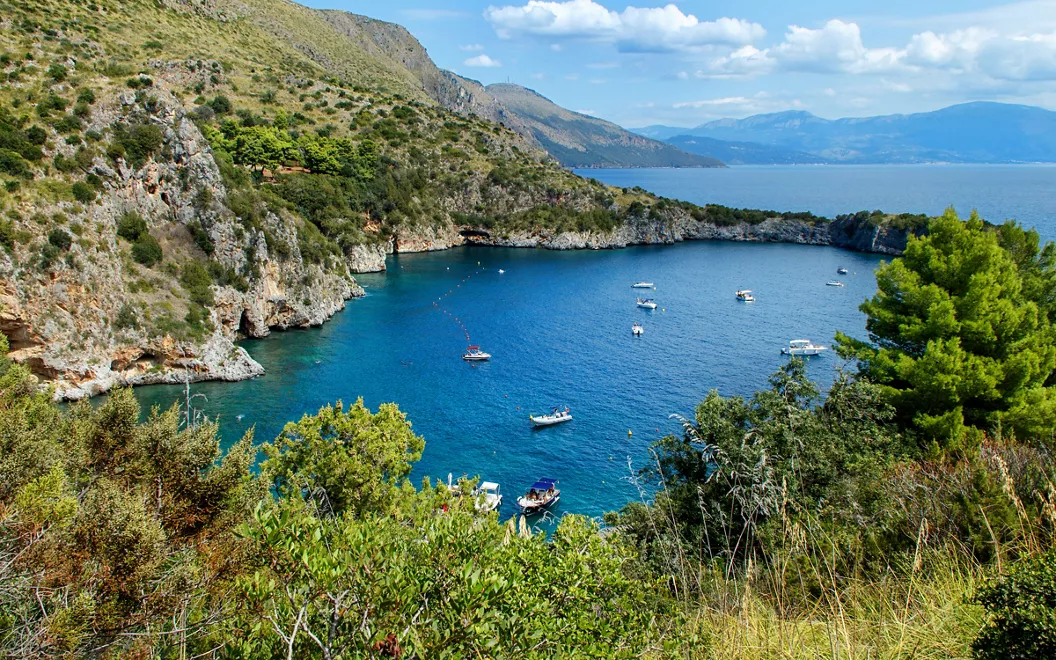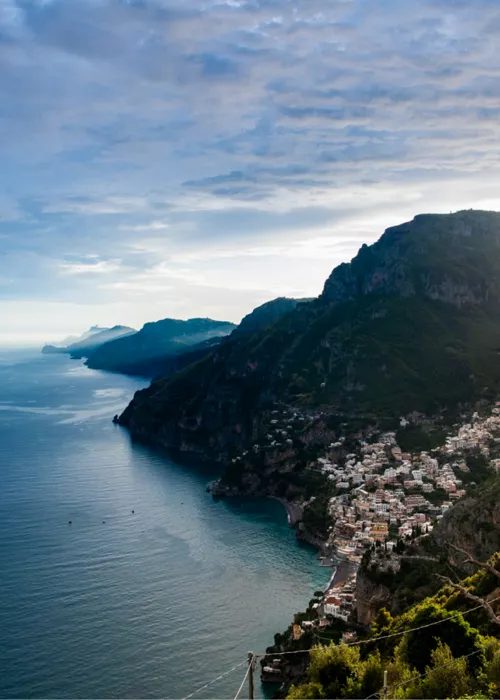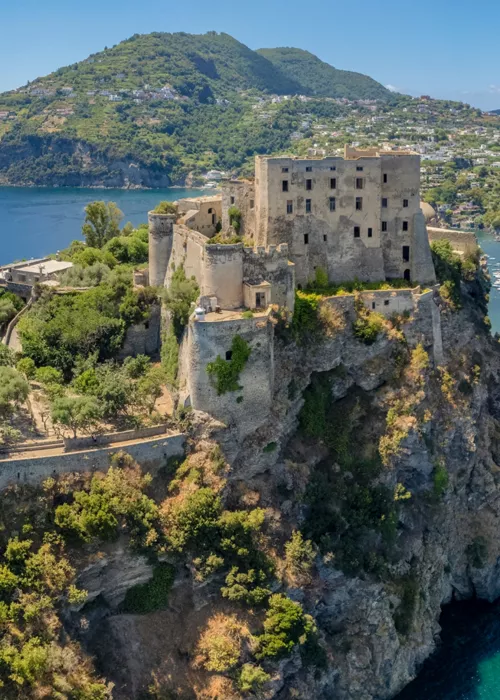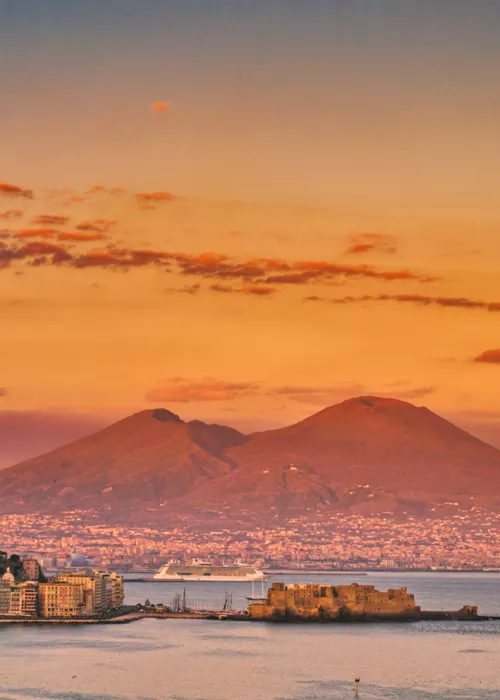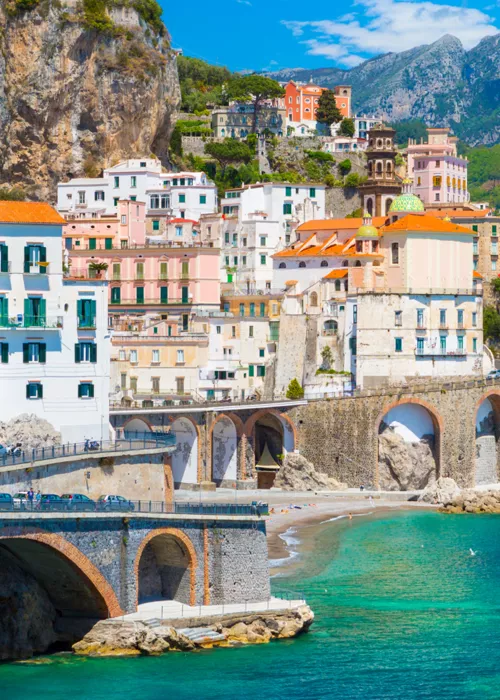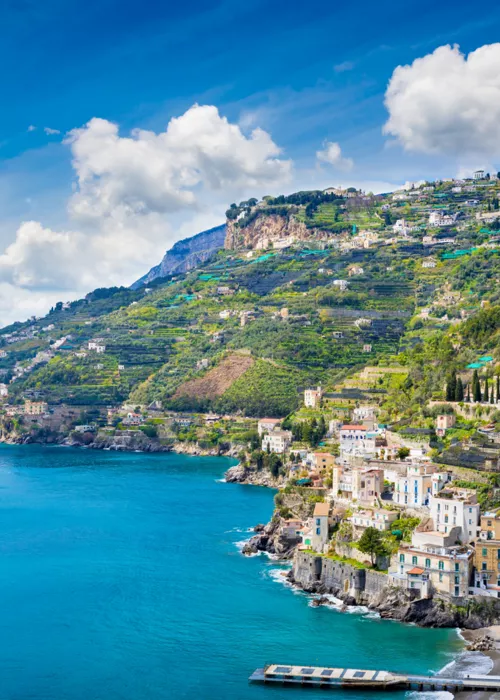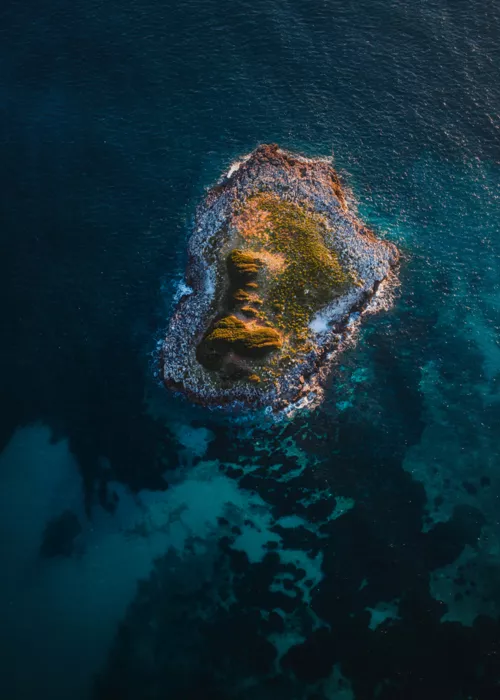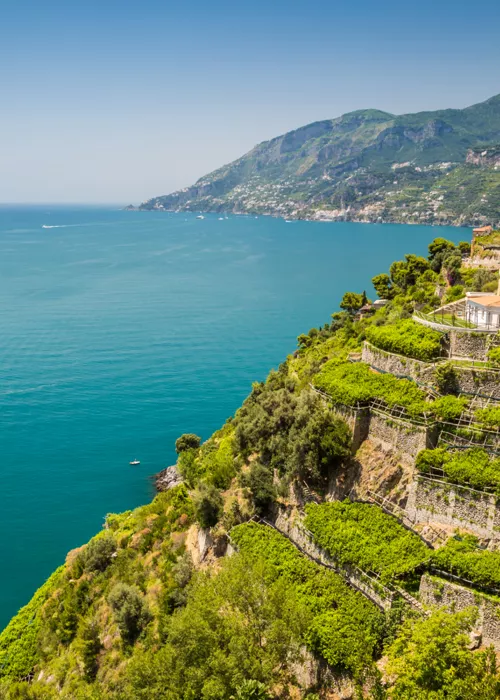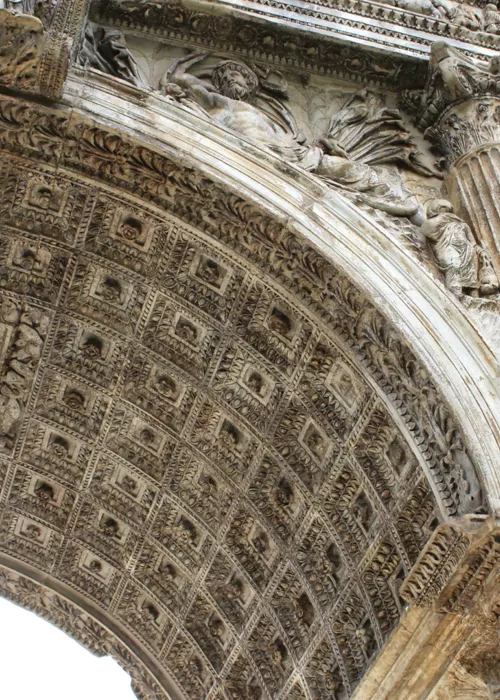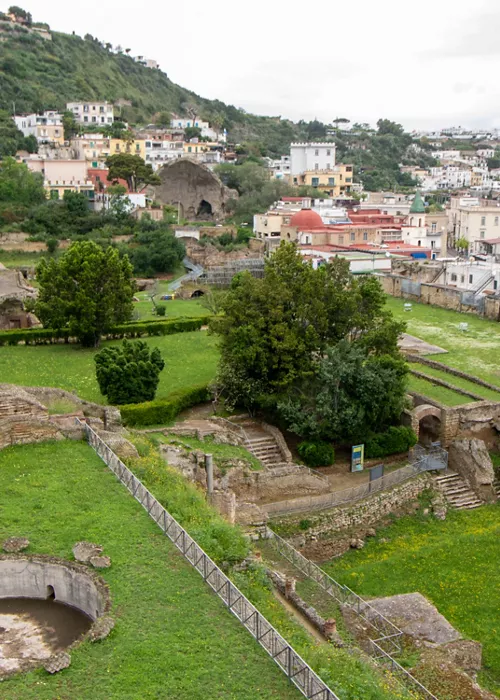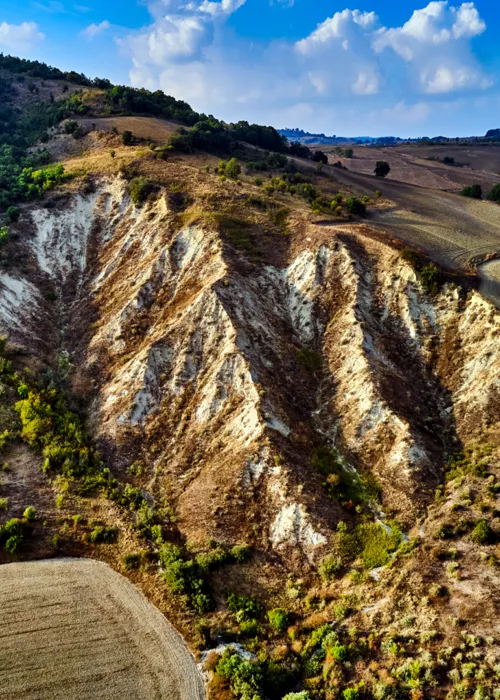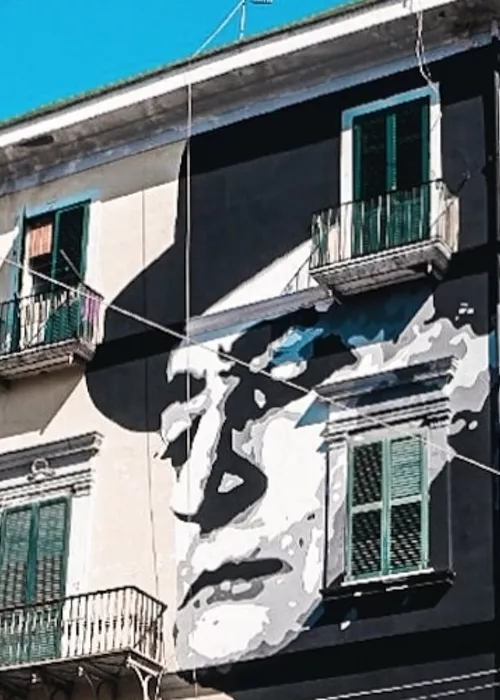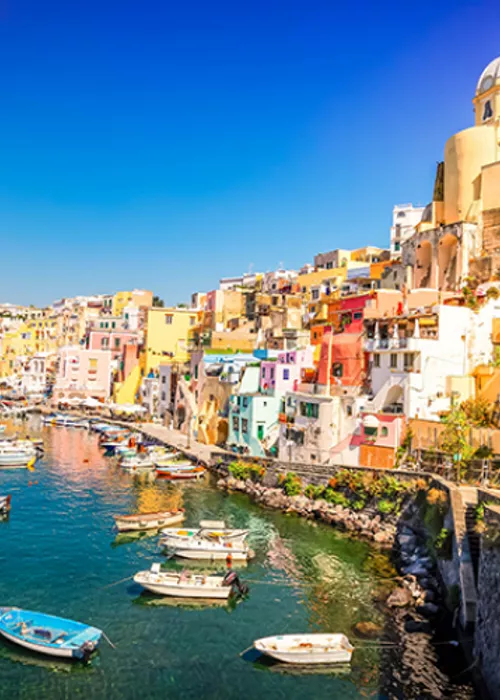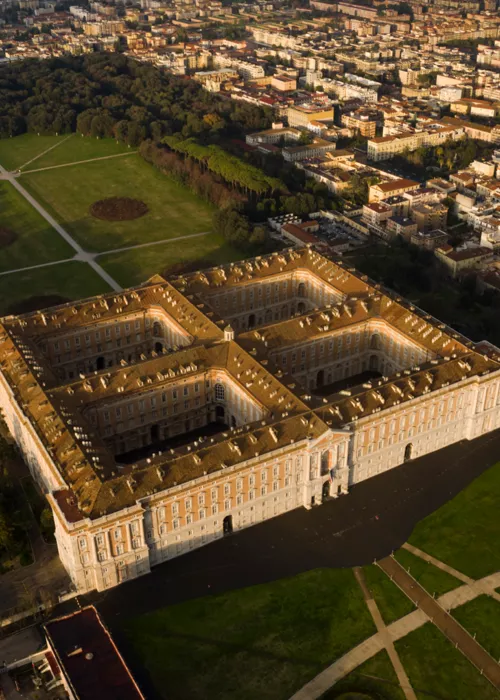Cilento, Vallo di Diano and Alburni National Park

It extends over more than 181,000 hectares, its highest peak reaches 1,900 metres in altitude; 80 municipalities form part of it and it has received two recognitions worthy of note: that of National Park in 1991, and UNESCO World Heritage Site in 1998. We're talking about the Cilento, Vallo di Diano and Alburni National Park, which includes a vast area between the Sele River plain to the north, the Vallo di Diano to the east and the Gulf of Policastro to the south. With dense forests, blooming meadows and spectacular mountains, rivers and waterfalls, you soon realise the power of nature here.
From Mount Cervati, the highest and most rugged peak, we move on to the river valleys with their karst phenomena: caves, dolines and sinkholes. Then there is the coast, with sandy shores, cliffs and headlands. A variety of landscapes reflected in the flora, with over 1,800 native species of wild plants (including the Palinuro primrose, the park's logo), shrubs typical of the higher altitudes, and Mediterranean scrub stretching towards the sea. The wildlife is also valuable: in the park, you can come across golden eagles, foxes and wolves. Yes, the Cilento National Park is a paradise for climbers, hikers, explorers, biologists and aspirants, for those who have always had a visceral love affair with nature and for those who are seeking this love.
There are many itineraries, both easy and difficult. For example, there is the one that runs through the Grotte del Bussento WWF Oasis, which goes from Morigerati (a small medieval village awarded the Italian Touring Club Orange Flag for its tourist-environmental quality) along a beautiful mule track, sometimes paved and sometimes carved into the rock, descends around a series of hairpin bends and leads to the entrance of Bussento cave. Or the one that leads to Mount Gelbison, the sacred mountain on which the Basilian monks founded the sanctuary of Our Lady of Monte Sacro in Novi Velia. Both the ascent to the Alburni mountains and the scenic excursion to the Pertosa-Auletta caves, a roughly three-kilometre hike in the bowels of the earth, are also worth the effort.
Acciaroli and Pioppi

In Acciaroli, Hemingway is said to have found inspiration for The Old Man and the Sea. This small, ancient fishing village is certainly captivating, with the Church of Santa Maria and the Norman Tower standing out against the shoreline, with their reflections stretching across the sea. Another plus point is that, according to research by the University of California, the small town holds the secrets of longevity, because here and in the surrounding area, out of a total of about a thousand souls, more than a hundred have reached the century mark. Cilento also has 30 centenarians per 100,000 inhabitants, more than twice as many as elsewhere. The "secret" is the lifestyle: the Mediterranean diet and the habit of long walks, which, together with the healthy local air and unspoilt nature, form the elixir of life.
A few kilometres further south is the unmissable Pioppi: a little gem, with its pebble beach and a handful of shops and restaurants. A great natural harbour, it houses the Virtual Museum of the Mediterranean Diet, a tribute to Ancel Keys. The American researcher lived here for forty years, conducting studies on human nutrition and unreservedly espousing the Cilento lifestyle. Therefore, yes: we can say that the Mediterranean Diet, listed as UNESCO World Heritage in 2010, was born in Pioppi.
Palinuro and other wonders

Cilento has a clean sea, normally an intense blue in colour. The coast features a continuous series of magnificent beaches and solitary coves, protected by lush pine forests and rocks concealing mysterious caves. But it is in the area of the Capo Palinuro headland that the most beautiful sea is found. Located in a picturesque bay protected by the cape, Palinuro is the main seaside resort in the whole of Cilento, yet remains discreet and retains the atmosphere of a fishing village. The real attraction of the place, however, are the beaches and caves carved into the limestone cliff. Buondormire beach is extraordinary: a small, wild bay of golden sand set between steep walls, emerald water and, in front of it, the Coniglio rock. Then there are the two beaches divided by a Natural Arch: an almost perfect arch carved into the rock that is something of a symbol of Palinuro. At the top of the cave rankings, there is the Blue Cave: its almost blinding colour is due to the presence of a siphon at a depth of about 20 m in which the light radiates. But it is a little further south, beyond Marina di Camerota, that the true pearl of the Cilento is revealed. This is the Costa degli Infreschi: a series of caves, coves and beaches, accessible only by boat or steep cliff paths but where the seabed is rich in marine life: corals, seagrass and many species of fish and crustaceans. The beaches of Cala Bianca, Baia degli Infreschi, Vallone del Marcellino, Sciabica and Le Gemelle are truly unmissable. This stretch of coastline and the more than 2000 hectares of beautiful sea in front of it is part of the Costa degli Infreschi e della Masseta Protected Marine Area.


